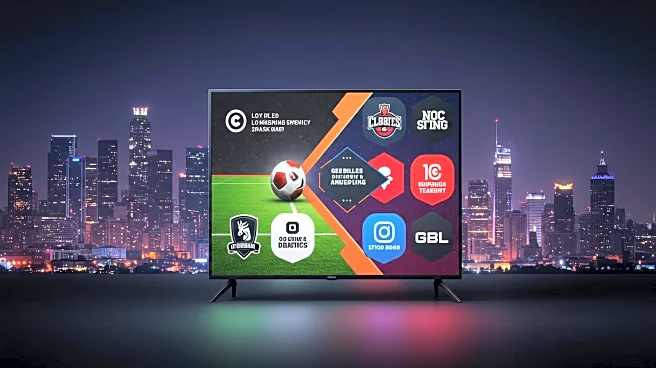What is the story about?
What's Happening?
ESPN has launched a new streaming service, offering its main channels outside the traditional cable bundle. This service, simply named 'ESPN', is available through a revamped app and is seen as a potential threat to the declining pay-TV bundle. The move comes after ESPN lost nearly half of its pay-TV subscribers over the past decade due to cord-cutting trends. Despite this, ESPN continues to generate significant revenue from cable subscriptions, charging about $15 per subscriber per month. The new service aims to attract the 60 million-plus people who do not have bundled TV services, offering them access to ESPN's content for $30 a month.
Why It's Important?
The launch of ESPN's streaming service marks a significant shift in the media landscape, as it challenges the traditional cable TV model. This move could accelerate the decline of cable subscriptions, impacting cable companies that rely heavily on ESPN's content. While ESPN stands to gain new subscribers, it risks losing revenue from existing cable subscribers who might switch to the streaming service. The broader media industry could see increased fragmentation as more networks follow ESPN's lead, potentially reshaping how sports content is consumed and monetized.
What's Next?
ESPN's streaming service could lead to further negotiations with cable providers, as they may seek to offer streaming options to retain subscribers. The service's success will depend on its ability to attract new subscribers without significantly cannibalizing its existing cable audience. ESPN may also explore partnerships with other streaming platforms to enhance its offerings and reach a wider audience. The impact on sports leagues and their reliance on pay-TV revenue will be closely watched, as they may need to adapt to changing consumer preferences.
AI Generated Content
Do you find this article useful?











